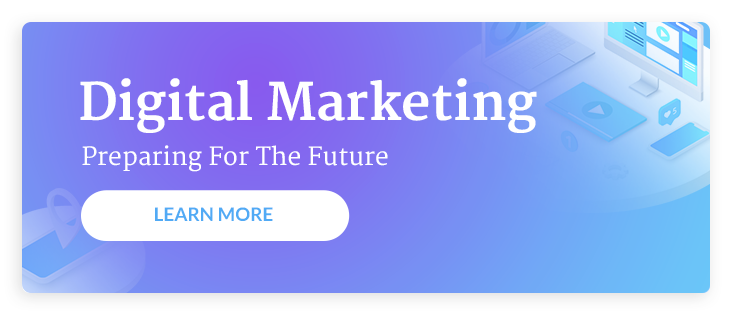
How to Market to the C-Suite

Senior-level executives are a notoriously tough sell. They’re busy, generally preoccupied, and they’ve perfected the art of saying no. After all, you don’t make it to the top by greenlighting every pitch or idea. The ability to make quick judgment calls and judiciously protect your time is a c-suite requirement.
As a marketer, this can be intimidating. First, you have to make your way through several levels of gatekeepers and earn an audience with a time-constrained chief officer, and then you have to grab and hold their attention long enough to convince them your offering is worth their investment.
It’s a complicated and delicate process with plenty of room for error (which is why many marketers miss the mark.) But success is not impossible!
Here’s what you need to know to grasp the brass ring, and market to the c-suite effectively.
Should You Market to the C-Suite?
Before you schedule a team mind meld and begin building a strategy, you need to decide whether it’s worth the investment. I’ve participated in countless meetings and conversations with marketing professionals who wholeheartedly believe marketing to the c-suite is a worthless endeavor, and there’s a good chance you’ve heard the same sentiment. And, to be fair, they’re partially correct.
Marketing to the c-suite can be futile — if you’re deploying the same strategies and tactics you use when you’re targeting directors, mid-level managers, or individual contributors. Also, in most cases, reaching a high-ranking exec requires an ABM approach. So unless you’re willing to put in the time and effort necessary to specifically target and engage senior leaders, then your energy might be better spent fostering closer relationships with the people who report to them.
That said, if you do opt to market to the c-suite, there are a few things you’ll need to do (and a few you’ll need to avoid).
3 Mistakes Marketers Make When Marketing to the C-Suite
While some organizations are wildly successful when marketing to the c-suite, others often fail. What’s holding them back? Here are the top three reasons marketers fail to win-over chief officers:
1. They fail to respect their time.
You’re busy, I’m busy, everyone we know is busy — and we all hate when someone wastes our time.
Now imagine you’re not only busy with your usual life demands, but you’ve got investors breathing down your neck with lofty revenue goals. You’re fully responsible for the performance of your department or, in the case of a CEO, the entire company. You know that if something goes amiss, it’s your head on the chopping block. Simultaneously, you’re bombarded with calls, emails, and ads from hundreds of vendors vying for your time and budget.
As you might imagine, anyone failing to empathize with a senior leader’s over-stacked calendar (or, worse, ignoring their time constraints altogether) won’t get very far.
2. They fail to do their homework.
Knowing your audience is Marketing 101. But, when it comes to the c-suite, you have to take it a step further. Generalized personas and assumptions about their challenges aren’t sufficient. You also need to understand their specific pain points.
Remember, you only have seconds to grab their attention! If you waste it by asking a thoughtless question you should already know the answer to, like who their biggest competitor is or their background in the industry, you’ll lose your shot.
3. They fail to clearly communicate value.
While lower-level decision makers might be interested in a laundry list of features and benefits or the various technical elements of your product or service, c-level executives are only interested in the end result. Focus your message on your value proposition, and distill the language down as much as possible.
5 C-Suite Marketing Tips
So now you know it’s critical to respect a senior-level executive’s time, do your homework, and make your value crystal clear. Now let’s cover a few specific strategies and tactics you can use as part of your effort:
1. Go where they hang out.
Part of your homework should be to find out where your target chief officer is spending their time.
For example, are they a member of any professional associations or networks? If so, look for opportunities to gain a foothold in those spaces. This might mean sponsoring an event or hosting a session at a leadership conference.
Do they have a presence on LinkedIn? If so, take time to review their profile thoroughly. It’s also useful to follow them and engage with their posts.
2. Understand their role.
The role of a chief officer varies significantly between organizations, industries, and company sizes. Some may be incredibly hands-on player-coaches, while others observe a higher-level role and entrust their VPs and directors with day-to-day decisions.
The better you understand their role (and the responsibilities they’ve assumed), the better you can target your message to their specific challenges and pain points.
3. Be upfront about why you’re the best fit.
Transparency is critical. Be honest and open about why your offering is better than your competition’s — and steer clear of flowery marketing jargon.
For example, if you’ve worked with several other companies in their industry, tell them. If you recently helped another client overcome a similar challenge, share that.
In other words, show them why you’re capable.
4. Give them something for free.
C-suite executives are wading knee-deep in content, and the last thing they need is another blog post filled with regurgitated facts. Instead, share something they haven’t seen and, preferably, something they can’t find anywhere else.
For example, an industry report using internal research and insights is a great way to grab their attention — especially if the data tells a compelling story.
I once worked for a tech company that made most of its revenue through media sales. Part of my role was marketing to CMOs, who are often highly resistant to traditional marketing strategies.
Instead of showering them with tactical blog posts they didn’t have time to read, we offered early VIP access to our highly anticipated annual report (including a highly exclusive executive-only webinar hosted by subject matter experts). This made them feel special, equipped them with valuable insights they could begin using immediately, and helped us earn their confidence and foster meaningful relationships.
5. Remember the buying committee.
No good c-level executive makes decisions in a vacuum. In fact, most of the time, they’ll kick the decision back down to a VP, director, or mid-level manager. That’s why it’s crucial you win over the buying committee.
Equip them with all the information they need to make a case for you, show them why your product or service will make their lives easier, and support them however you can. Often the best way to the c-suite is through a team of internal champions.
Start Using These C-Suite Marketing Tips
Marketing to the c-suite isn’t easy, and it takes plenty of out-of-the-box thinking and a little trial and error. What works for some chief officers may not resonate with others. But by following these marketing tips, you’ll be several steps ahead of your competition.




